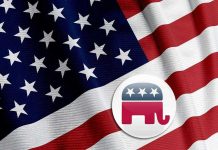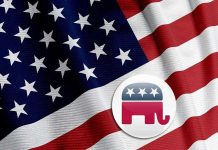
U.S. private sector jobs plummeted by 33,000 in June, shocking economists who had predicted substantial growth and signaling potential trouble for President Trump’s economic agenda.
Key Takeaways
- U.S. private payrolls fell by 33,000 jobs in June, the first decline since March 2023, dramatically missing economists’ expectations of 95,000-100,000 job gains
- Professional services, education, health services, and financial sectors suffered losses, while leisure, hospitality, manufacturing, and construction showed growth
- Small businesses were hit hardest with significant job losses, while larger companies managed to maintain payroll growth
- Despite job growth slowdown, employee pay increases continued with annual pay up 4.4% in June, suggesting wage inflation persists
- President Trump remains optimistic about economic growth, citing investment inflows and his policies as drivers for recovery
Economic Expectations Shattered as Private Sector Jobs Decline
The U.S. private sector shed 33,000 jobs in June according to ADP’s National Employment Report, marking the first monthly decline in employment since March 2023. This unexpected drop shocked economists who had projected job growth between 95,000 to 100,000 positions for the month. The disappointing figures represent a significant deviation from the steady employment trends that had characterized the labor market and could signal broader economic challenges ahead as the Trump administration works to restore economic confidence.
Job losses were concentrated in specific sectors, with professional and business services, education and health services, and financial activities experiencing significant declines. In contrast, leisure and hospitality, manufacturing, and construction industries managed to add jobs, demonstrating the uneven impact across the economy. Geographically, the Midwest and Western regions of the United States experienced the largest contractions, while the Southern states continued to see modest job growth, reflecting regional economic disparities.
Small Businesses Bear the Brunt of Employment Decline
The employment decline disproportionately impacted smaller businesses, which experienced substantial job losses compared to their larger counterparts. Major corporations with greater financial resources and market stability actually managed to grow their payrolls during the same period. This divergence highlights the heightened vulnerability of small businesses to economic uncertainties and potential cash flow constraints, raising concerns about the foundation of America’s economic engine as small businesses collectively remain the nation’s largest employer.
“Though layoffs continue to be rare, a hesitancy to hire and a reluctance to replace departing workers led to job losses last month,” said Nela Richardson, chief economist at ADP.
While job creation has slowed, the data also reveals that planned layoffs decreased by 49% in June compared to the previous month, according to outplacement firm Challenger, Gray & Christmas. More significantly, planned layoffs in the second quarter were half the level seen in the first quarter. This suggests employers are adopting a cautious approach—not aggressively cutting existing positions but simultaneously hesitant to create new ones amid persistent economic uncertainty.
Wage Growth Persists Despite Employment Slowdown
Despite the job market contraction, wage growth remained relatively strong in June. Annual pay increases for employees who stayed in their positions rose by 4.4%, while those who changed jobs saw even higher gains at 6.8%, though slightly down from 7% in May. This continued wage growth amid slowing hiring could present challenges for inflation control efforts and complicate the economic recovery strategy. The persistence of wage increases suggests that labor market tightness continues in certain sectors despite the overall employment decline.
“Use ADP only to gauge the big picture,” advised Carl Weinberg, chief economist at High Frequency Economics. “Right now, that picture shows ADP’s private sector employment estimates declining steadily since December. Today’s big drop underscores that decaying trend.”
While the ADP report has historically shown an imperfect correlation with the Bureau of Labor Statistics (BLS) employment figures, economists generally view it as a directional indicator. The government’s upcoming employment report is expected to show an increase of approximately 105,000 private payrolls and 110,000 overall nonfarm payrolls in June. The unemployment rate is forecast to rise slightly to 4.3% from 4.2% in May, potentially indicating a gradual cooling of the labor market.
President Trump Remains Confident in Economic Recovery
Despite the concerning jobs report, President Trump has expressed strong optimism about the direction of the economy. The administration points to significant investment inflows and tariff revenues as evidence that economic policies are working to stimulate growth and recovery from previous economic challenges. Trump has highlighted the importance of recent legislative initiatives in supporting continued economic expansion and job creation, positioning the current challenges as temporary obstacles on the path to renewed prosperity.
“Trillions of Dollars are now being invested into the USA, more than ever before. Likewise, hundreds of Billions of Dollars in Tariffs are filling up the coffers of Treasury. The Tariff money has already arrived and is setting new records!” wrote President Donald Trump.
The President has further emphasized the importance of his economic agenda, stating, “We are growing our way out of the Sleepy Joe Biden MESS that he and the Democrats left us, and it is happening much faster than anyone thought possible. Our Country will make a fortune this year, more than any of our competitors, but only if the Big, Beautiful Bill is PASSED!” The referenced spending bill recently passed the Senate and has moved to the House, potentially providing additional economic stimulus if enacted.









